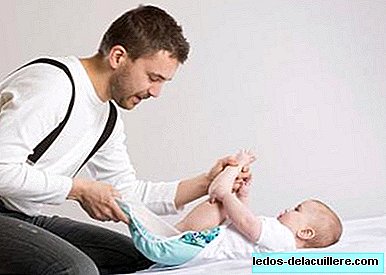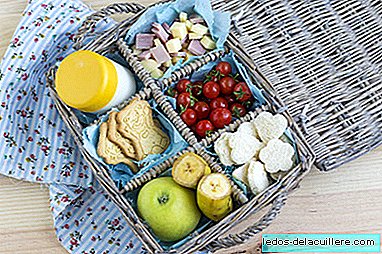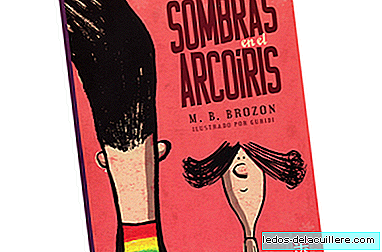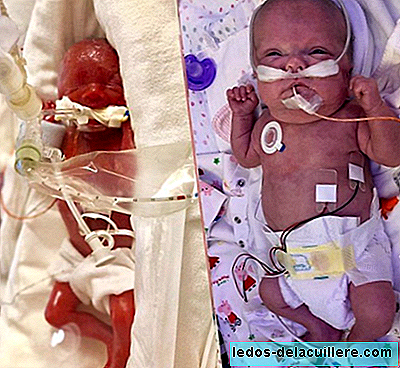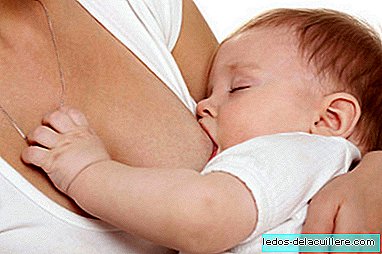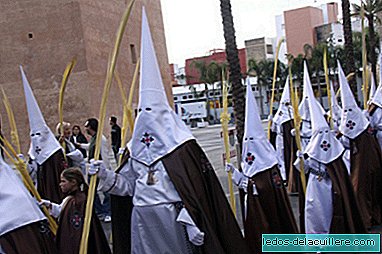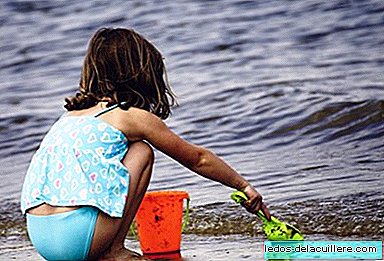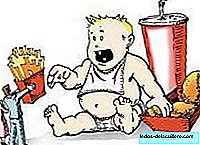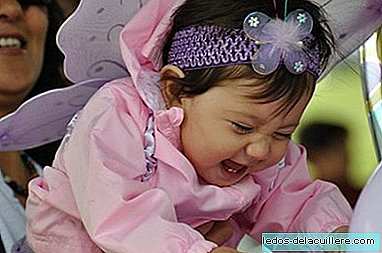
Twelve months have passed since the birth of our son, and in this time we have been able to see how he grows, and how new skills are being developed with which to adapt to the world around him.
Little by little, he is able to move with greater autonomy and make more complex movements that will help him achieve different goals. Your cognitive ability also develops as you interact with the world, researching your environment and playing with various objects and people. And the language development from one to two years It will also be quite significant.
Begins to make broadcasts that will allow you to more easily regulate your environment to achieve those things that are not at your fingertips and that are of your interest, as well as having a greater communication power, since you will not only use the gestures to make yourself understood, but little by little your repertoire of sounds will increase.
Between twelve and eighteen months
Initially, our child will start using between one and three words (which will gradually increase) in a referential sense, that is, that they want to mean a specific person, food or object. For those words that he does not know, especially objects and animals, he will use sounds onomatopoeic sounds in order to make himself understood.
It is at this stage that you will use single-word phrases, also known as holophrases (such as "ball" to refer to "I want that ball" or "bread" to say "I want more bread") to communicate verbally with your environment, since you are not yet able to issue longer sentences. However, little by little, as it grows, a greater number of real words will appear that you will use in your spontaneous language, reaching ten or more sign or onomatopoeia words throughout this semester.
The sounds that we can distinguish more frequently at this stage are, mainly, the sound / t /, / n /, / m /, / p / and / b / since they are the sounds that when articulating are more easy to do because they do not involve too much articulatory difficulty.
When we start playing with them, or even in the routines of daily life, we can see how our little one can imitate vocalizations, exclamations or facial gestures that we make, in addition to adequately repeating onomatopoeic sounds of objects or animals.
As you grow older, you will also be able to imitate familiar words formed by two different syllables (ma-pa, ba-ta…), as well as imitate familiar words that you hear in a conversation or the gestures you observe in others when speaking, always and when these words or gestures are within your repertoire and are known to you.
its understanding little by little he also gets richer: he responds with appropriate gestures to different mandates that are requested ("take the ball", "don't run" ...), he indicates common objects in his environment when they are named with words or gestures, he indicates his age raising the index finger when asked ...
When telling a story, he begins to keep interest in the images he presents, putting his index finger on one of the drawings and can even identify most of the common objects when they are named, looking at them or pointing them out with his index finger , and can even identify a specific image between two.
All of the above translates into that your communication is increasingly effective, since he uses words or gestures to communicate his wishes. Use the protoimperatives (gestures by which the child uses us to get something) and the protodeclaratives (gestures that the child uses to share our attention with respect to an object he points to). In addition, when he vocalizes the intensity or tone changes to make himself better understood.
Between nineteen and twenty four months
As our son approaches two years, his repertoire of sounds and vocabulary gradually increases. Start combining two words that are usually, mostly (names or common) or verbs. In addition, it overgeneralizes the meaning of the words, since for him every four-legged animal is a dog or all the meat will be "chicha".
Upon reaching twenty-four months, our little one will have a repertoire of 50 words approximately, which will be combined with some decisive articles and even using pronouns (yes, with errors). But most of the time you want to refer to yourself will use your name instead of the pronoun "I". Their phrases can be of two or three elements which, generally, are usually combinations of verbs followed by a noun.
As in the previous semester, when we are in a playful situation we can see how our son can imitate quite well new movements visible, on the body itself, or sounds of the environment (animals, engines, clock, telephone ...). It is also capable of imitating simple new words of two syllables and sounds precisely. In addition, he will gradually integrate in his spontaneous language those sentences of two or three words that he imitates of the adult.
its understanding It also notes some improvement, since it now responds appropriately and discriminates better among various ambient sounds, in addition to being able to follow orders that understand an action within a given context, and can even perform two actions in a row.
If we are reading a story together, we notice how it is able to identify most of the common objects when they are named, looking at them or pointing them out with their index finger. In addition, if we present five drawings or more and ask you to select one in particular, you can do so without much difficulty.
In short, our little one manifests knowledge of new words at an increasing rate, which translates into, for example, being able to properly select drawings that represent a large number of basic objects, people and actions.
His communication now consists of a mixture of jargon and real words that he uses to comment on something, ask for objects and actions on the part of the adult (for example, repeat something that makes him very funny) or simply to get attention. We notice how he is able to greet people with appropriate gestures or vocalizations or to address the adult to get information with an interrogative look, changes in the tone or intensity of the voice or with words. In addition, this would correspond to the "no" stage, since it is your answer to anything you don't want to do or as a means to protest something.
Conclusion
He language development in the child between the year and two years It is a very important advance at all levels: the repertoire of sounds and vocabulary increases considerably, its ability to imitate helps you to integrate new words or gestures that will also result in a greater capacity for understanding and, most importantly, your intention Communicative will be increasingly profiled, which makes it increasingly competent.


